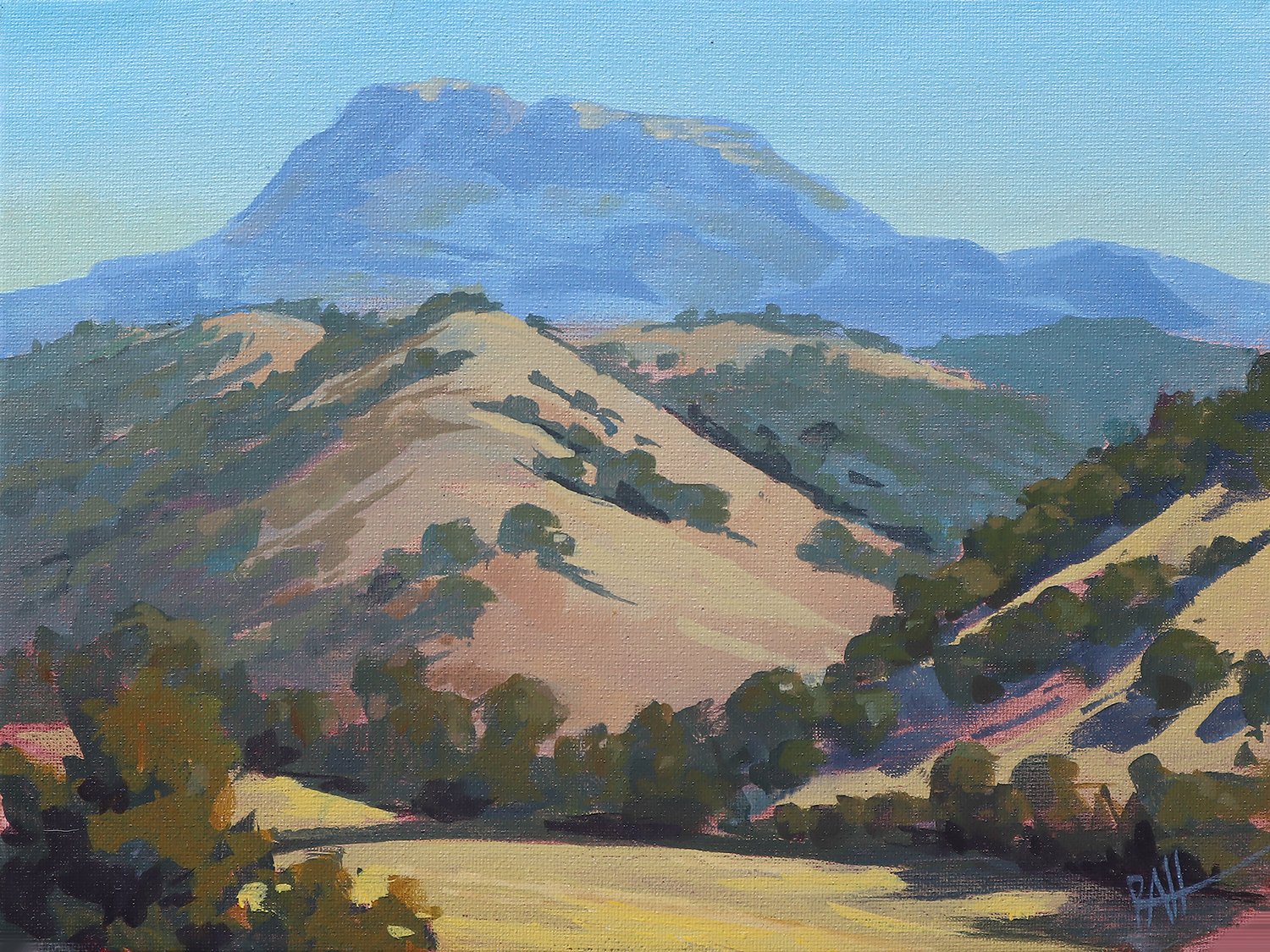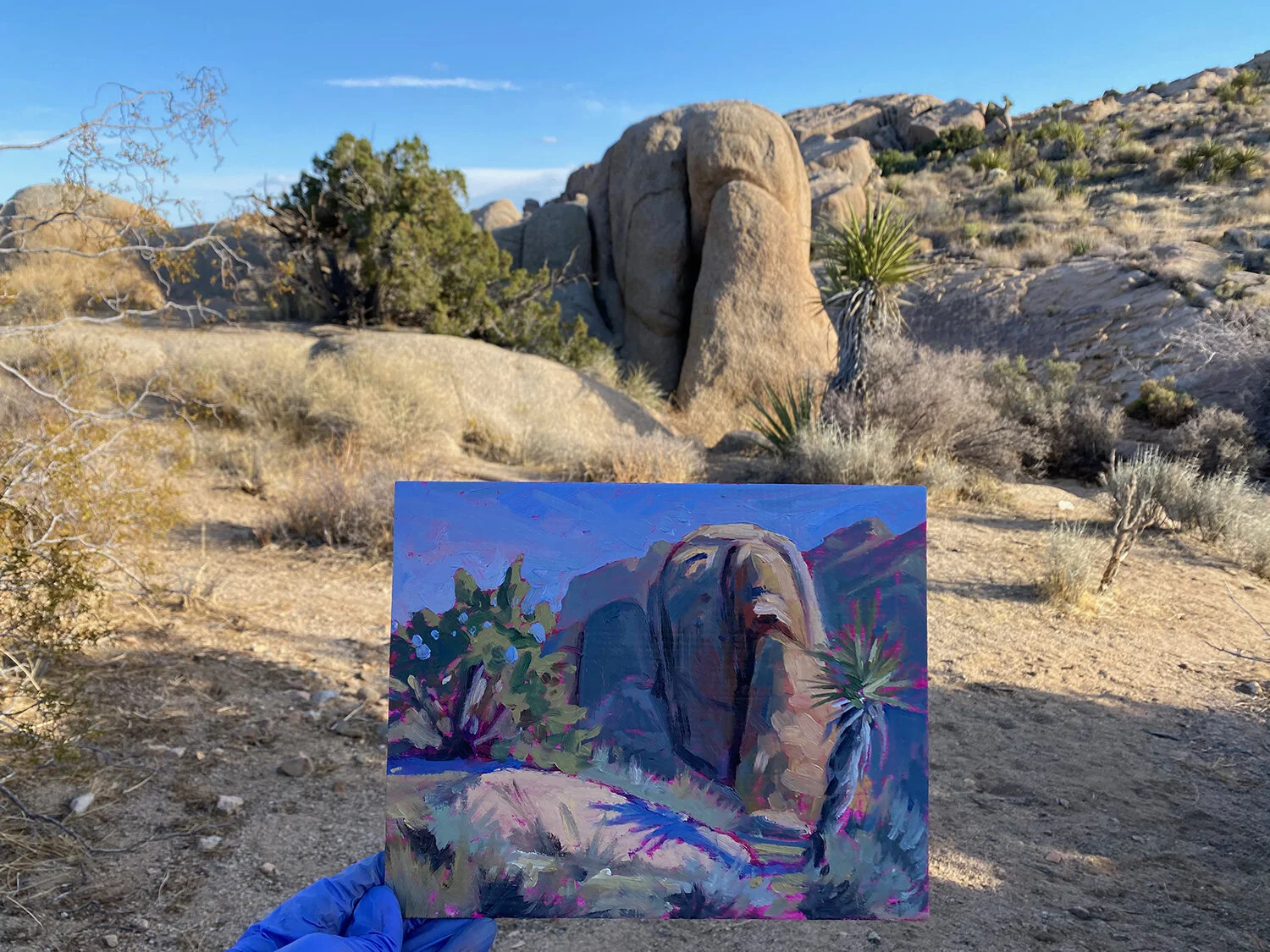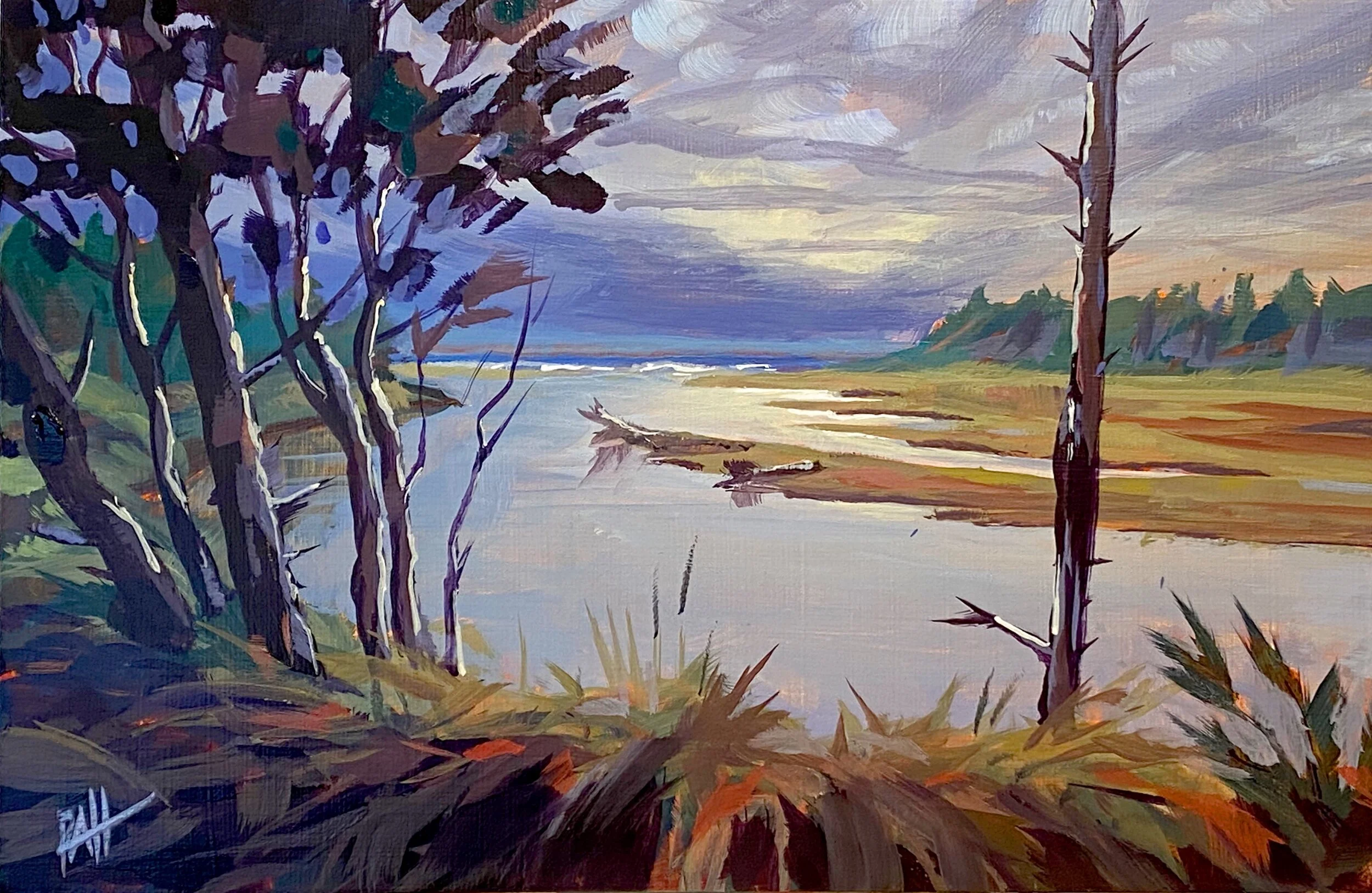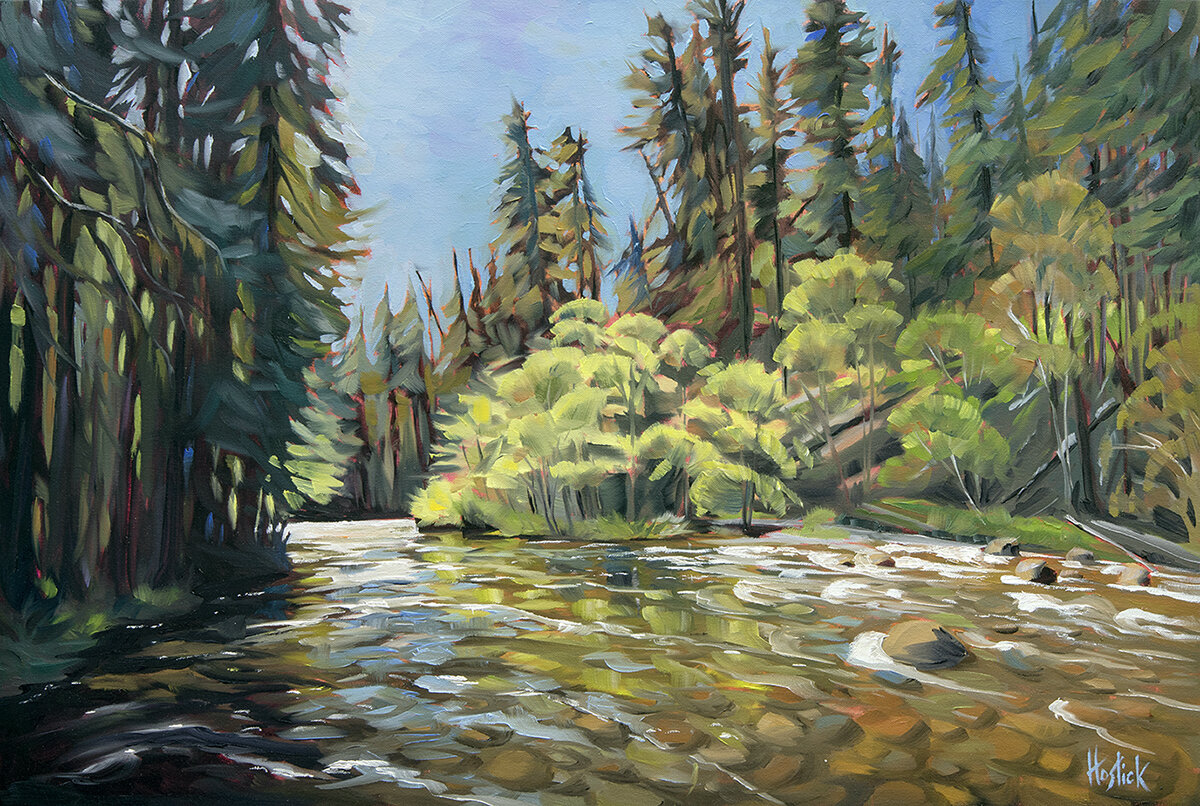High in the Three Sisters Wilderness, the predawn air felt curiously warm for early October. I reflected on this as I emerged from my tent into darkness. During prior years around this same time, I would have been standing in drifts of snow. As it was, I put on a light jacket and shouldered my day pack for the steep hike ahead.
To the west, a half-moon hung suspended in a dome of stars above the South Sister’s looming silhouette. Although first light would not arrive for another hour at least, I soon switched off my headlamp and made my way by moonlight. I couldn’t stop grinning. What a sense of freedom! I felt lucky to be there.
After a while I left the trail and began climbing cross-country to a lofty ridge on the flanks of Broken Top. Here I hoped to find the perhaps the most stunning view of the Three Sisters I’d seen yet. A year or so ago I was looking at maps and began planning a route to a location I thought might offer a unique vantage point of the region. When a couple approached me to commission a painting of all three mountains together, I saw a perfect opportunity to test my theory and – if it worked out – gather inspiration for the painting.
I sat quietly as the sunrise unfolded with pastel glory. The peaks glowed and the land lay still below my promontory on the ridge. Eventually, I hiked up and down the ridge for a mile or two, searching out the perfect vantage point. It turned out to be almost exactly where I expected it to be. The best view captured Green Lake resting in a basin at the South Sister’s feet with the Middle and North Sisters rising beautifully over her shoulder.
It turned out, however, that the early morning light cast the lower half of the mountains in deep shadow. Though breathtaking, the light was not quite right to capture the feeling I was after. I resolved to come back in the evening.
After a visit to camp and a quick nap, I spent the day exploring the area – visiting places I’d been before as well as discovering a few new corners of the spectacular mountain hideaway. By the afternoon I was tired but, as shadows began to stretch down the eastern flank of the mountains, I hoofed it back up to the ridge for another look. Including the prior evening’s scouting mission (in the fading light after sunset), this was the third time I’d climbed the ridge in 24 hours.
The light was perfect. Deep shadows lay across the landscape, casting the mountains’ volcanic ridges in beautiful relief while setting the turquoise lake aglow. I spent the evening dashing around the steep ridges and cliffs, gathering references for the painting I was already beginning to compose in my mind. Eventually I found a comfortable perch on a steep pumice slope, took a few notes, and just watched the day fade into a fine October evening. Once the colors faded and darkness gathered, I bushwhacked back down to camp.
Before dawn the next morning, the moon was high again. I clambered out and headed north along the lake, headlamp off, towards a different, more distant ridge. I splashed along the shallow edges of the lake. A light breeze ruffled the water, tracing swirls of silver moonlight and sending small waves to lap rhythmically on the shore.
Eventually I left the trail and turned uphill. Since I’d never ascended the ridge from this direction before, I encountered some unexpectedly gnarly terrain between me and my destination. A promontory of blocky, volcanic rock rose a couple thousand feet above the lake, held together with a tangle of bleached krummholz (trees twisted by the wind). I took it slow and made it up safely in the gathering light.
In case some of you are wondering if this was a good idea, that’s fair. Yes, I was keenly aware of the risks of being solo in the mountains, climbing off-trail in unfamiliar terrain in the dark. This is a credible claim because, a few years ago, I broke my femur mountain biking in a canyon near Moab and had to be hauled out of the wilderness by search and rescue. The search and rescue team, and the efforts of my good friend and riding partner, saved my life.
Rest assured I have no intention of repeating that experience. I take extra care with decision making and move very carefully through rough terrain. As an added precaution, ever since the rescue I also carry a satellite communicating device and know how to use it (although I absolutely do not consider that a license to take risks). The device is as much for others as for me.
Normally I explore with at least one other person. On this occasion, however, what started out as a group adventure dwindled to a group of one. So be it, I thought.
Having done some solo exploring before, I found the experience, as always, especially poignant and rewarding. I’m a social person and love adventuring with other people more than anything. But I’ve discovered that going solo is a different kind of experience entirely.
It turns out that a huge amount of our attention is occupied by social relationships. We’re naturally attuned to one another. It’s a big part of what makes us human. On a solo adventure, all that brain capacity is freed up to pay closer attention to what’s happening around us. Furthermore, you’re much less likely to be making human noises; you become just like any another critter in the woods. You notice more. You think more. In short, going solo helps you be more fully present.
I still wouldn’t trade a social adventure for a solo one. But I’m beginning to think there might be room for both kinds, and that the occasional solo trip might offer some real benefits.
As I gained the rocky promontory, for example, I settled down to watch the rising sun light up the mountains and spill across the landscape. The sense of space engulfed me, and time seemed to slow a bit. I felt, as I sometimes do – especially since witnessing the solar eclipse a few years ago – as though I rode upon a great sphere of rock hurtling through the void of space. This may sound obvious when one thinks about it, but it’s quite rare to actually feel it.
About that time, I saw movement from the corner of my eye. A few feet from where I sat, a small, weasel-like critter with a gray face and bushy, bottlebrush tail popped up from between the rocks. I was astonished to realize it was a pine marten. Over many years of wilderness adventures, I had only seen one of these notoriously elusive critters. The pine marten looked at me curiously, but because I had been sitting quiet and motionless, it didn’t appear to sense danger. I enjoyed watching it search among the rocks for a while before it disappeared.
Afterward I realized I almost certainly only saw it because I was hiking alone.
In that sense, I find going solo not the least bit lonely. In the wilderness I’m surrounded by all kinds of living things and natural processes taking place in real time. The feeling that you’re a part of that living system is a special kind of belonging. I don’t think it replaces human belonging but adds to it in a deeper way. In fact, our natural world might just be the one thing we all belong to.
Eventually the time came to leave the wilderness and head back out into the human world. I left nothing but footprints, but I took a great deal more than pictures. In case you’re wondering what this all has to do with painting, the answer is: everything. I’ll tell you more about it in my next post.































